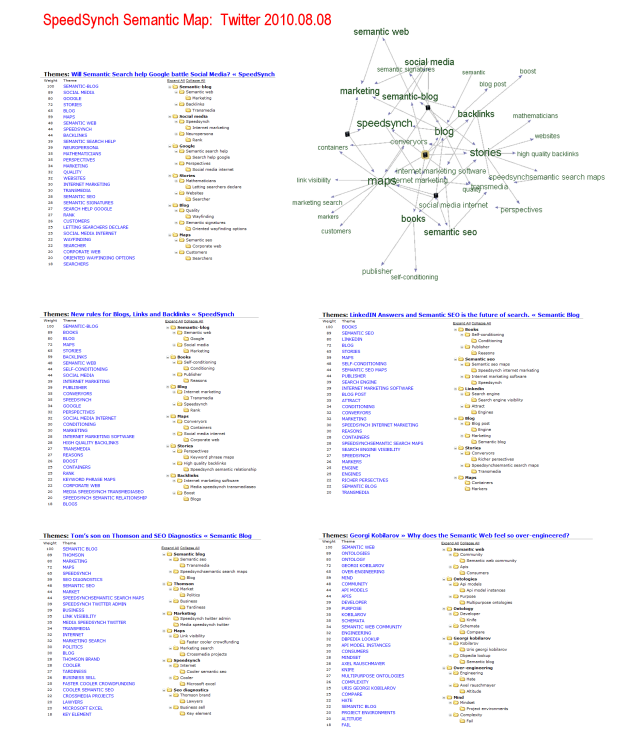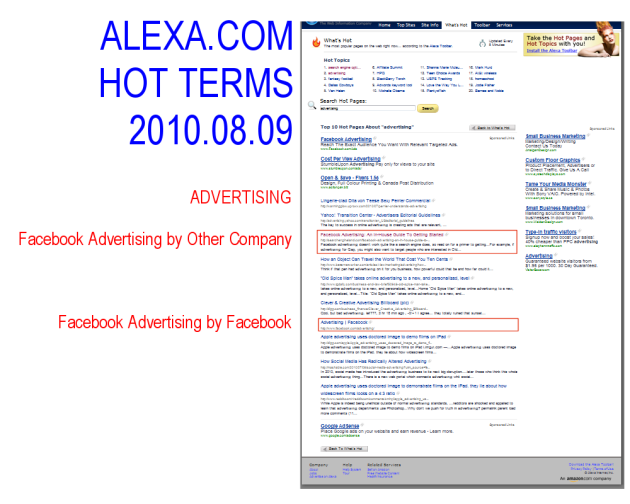Naming is the New Branding
2010/09/05 1 Comment
Social Media software platforms like WordPress, LinkedIn, Facebook and other provide a space for ordinary people to create their own content and compete with marketers and advertisers who are served by search engine corporations. Today if you post enough blog content you can influence which links are presented to searchers by search engines.
Quantity Trumps Quality
Content quantity now rules quality and the value created by advertisers is temporary as it may be disrupted at any time by Social Media bloggers who create a ‘stronger path’ to links unreleated to the products or their brand owners regardless of how much money they spent to create those relationships. If the idea that quantity of advertising or promotion trumps quality leaves a bad taste in your mouth then consider the poor advertising agencies who in the past four or five years have been swamped by Public Relations firms or advertisers that shout the same message many times–not exactly a quality focus though some ads are good.
Advertising and promotion on the internet is no longer even remotely additive which implies that the revenue and advertising models that up to late 2008 favoured search engine optimization or SEO have eroded quickly and there are opportunities in finding their replacements.
Go with Strength
If since late 2008 or early 2009 over half of all internet searches started in Social Media platforms and posting enough blog content will impact positively on your search engine results ranking or negatively impact your competitors then why do corporations still believe in the concept of search engine optimization? May advertisers will go with strength and re-focus marketing investments to divert advertising programs and events from a SEO orientation to focus squarely on Social Media.
THE RISE OF NAMING
May marketers intuitively undersand the rise of social media though they continue to stick with applying the concept of branding to a platform that naturally embraces NAMING. What is naming?
Names Rule and Trump Brands in Social Media Internet Marketing
You too can understand which names are important in your communities and to your customers by looking at their stories and how their stories RESONATE to attract people to content which in turn directs them to products or provides answers to questions important to searchers or customers.
Identify Names and Searcher Perspectives
Our objective is simple when using names–we idenfity which names and their associated story perspectives which make them valuable to people. Here are the simple and proven steps that we use:
- Look for names or stories in content important to customers, ideally names that reflect current needs or objectives
- Analyze our products and brand to determine the ‘names’ or keyword themes that correspond to step 1 above
- Tune our content and Social Media or SEO or Media advertising to link important customer names to our products
Content and Customer Resonance
It is imporatant to note that content in Twitter, Social Media blogs and corporate web sites all change or resonante differently and when looking at the competitive analysis exemplar below we may direct some customers to Twitter, others to our Social Media blogs and others to our corporate site. The determination of where we direct our customers depends on there interaction preferences and the closeness of NAMES in the three locations so that we align closely and carefully to customer names used.
Let’s start by understanding how our content resonates. We determine how ‘people’ resonate with the same approach by looking at the content they post and the names they use to describe their questions or problems and answers or solutions they seek.
Social Media and Competitive Analysis
Social media sites by their nature must change quickly to accomodate and serve their customers. Web sites on the other had change very slowly in comparison. They are tightly controlled effective, efficient and usually have a higher quality standard than social media sites, which is why since early 2009 content creation, searches and business models have moved towards social media.
Competitive Analysis and Internet Marketing
Internet marketing is not possible without competitive analysis as customers have too many options available. They find content virtually anywhere and can buy from just as many suppliers. Indeed if you Google any product or service the manufacturer or licensed reseller is often not on the first SERP or search engine results page.
Competitive analysis is the art of finding where you are compared to your competitors on Google and measuring the distance of your story from your current or future customers on LinkedIN, Twitter or WordPress. SpeedSynch Semantic SEO report maps like the one below lets you easily compare the semantic signature of products, content and customers to determine if your story is close to your customer needs and when the distance changes.
SpeedSynch Twitter Feed Signals New Product Focus
* Double click on map and click again or use the zoom feature on your browser to view the two Resonance maps below…
Resonance map of SpeedSynch.com’s Twitter Stream
SpeedSynch.com Resonance Map
We clearly see the SpeedSynch Twitter shift by looking at the semantic differences to the web site Resonance map above.
Names Rule and Trump Brands in Social Media Internet Marketing
While this may seem like a controversial statement, in my experience names rule and trump brands in Social Media internet marketing and the sooner you assess if this is true for your company or brand the bigger advantage you will have to create new and unique value for your customers.
Cheers,
Nick Trendov
www.speedsynch.com @resonantview








